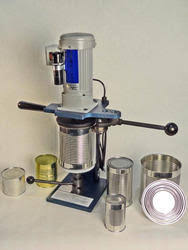Building resilience against suicidal thoughts involves a multifaceted approach that integrates various mental health strategies aimed at strengthening one’s emotional well-being and coping mechanisms. When confronted with suicidal thoughts, it is crucial to recognize them as a signal of deep distress rather than a definitive solution. Here’s a comprehensive guide to developing resilience and combating suicidal ideation: Firstly, acknowledge and accept your feelings. Suicidal thoughts often stem from overwhelming emotional pain or a sense of hopelessness. It is essential to validate these feelings without judgment. Allow yourself to experience and express your emotions in a safe environment. This can be through journaling, talking to a trusted friend or therapist, or engaging in creative activities like art or music. Secondly, reach out for support. You do not have to face suicidal thoughts alone. Share your feelings with someone you trust, whether it is a friend, family member, or mental health professional.
Talking about your struggles can provide relief and help you gain perspective. It is okay to ask for help, and seeking support is a sign of strength, not weakness. Thirdly, develop coping strategies. Identify healthy ways to manage stress and regulate your emotions. This might include practicing mindfulness or relaxation techniques, engaging in physical activity, or pursuing hobbies that bring you joy. Establishing a routine can provide structure and stability, which is crucial during difficult times. Fourthly, challenge negative thought patterns. Suicidal thoughts are often accompanied by distorted thinking patterns that exaggerate problems and underestimate your ability to cope. Replace self-critical thoughts with compassionate and realistic statements. Remember, thoughts are not facts, and they can be changed. Fifthly, build a safety plan. Create a step-by-step plan that outlines what you can do when suicidal thoughts arise. Include coping strategies, emergency contacts, and professional resources such as hotlines or crisis services.
Keep this plan accessible and share it with trusted individuals who can support you during a crisis. Sixthly, prioritize self-care. Taking care of your physical and emotional needs is essential for maintaining resilience. Ensure you are getting enough sleep, eating balanced meals, and avoiding substances that can worsen your mood. Practice self-compassion and treat yourself with the same kindness you would offer to a friend in distress. Seventhly, engage in meaningful activities. Identify activities and goals that give your life purpose and fulfillment. This might involve volunteering, pursuing interests, or setting small achievable goals. Engaging in meaningful activities can enhance your sense of belonging and increase feelings of self-worth. Lastly, how to kill yourself without pain stay connected. Build and maintain a strong support network of friends, family, and peers. Social connections provide emotional support, reduce feelings of isolation, and offer opportunities for positive experiences. Attend support groups or participate in community activities where you can connect with others who understand and empathize with your struggles.





